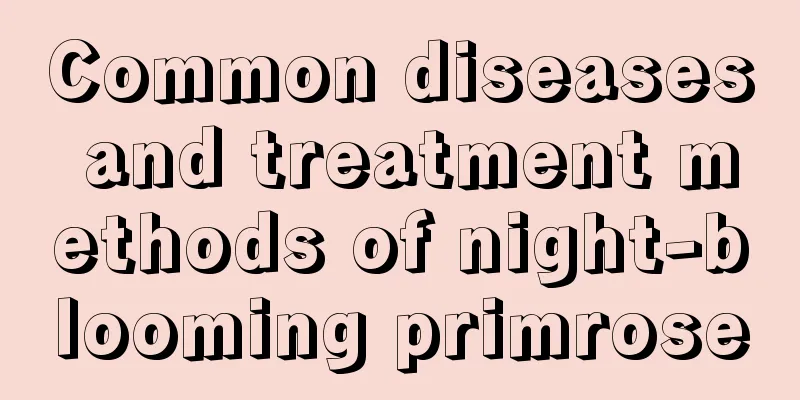What fertilizer should be applied to wheat in winter?

|
When the temperature drops below minus 3°C, the above-ground part of the wheat will stop growing and enter a dormant period, but its underground root system will still grow slowly. Theoretically, if insufficient nitrogen fertilizer is applied at sowing time, wheat seedlings may turn yellow. Let’s learn together what fertilizers to apply to wheat in winter? 1. The best time to fertilize wheat in winter 1. Greening period After entering the greening stage, winter wheat will gradually enter the tillering stage and jointing stage. Fertilization at this time has a great impact on its yield. During the greening period, topdressing is generally based on nitrogen fertilizer. Urea or carbon ammonia can be selected. The recommended method of fertilization is furrow application and covering with soil, which is more conducive to fertilizer absorption. 2. Jointing stage Winter wheat has a peak demand for nutrients during the jointing and flowering stages. Fertilizing during this period can promote the flowering, ear formation and grain filling of wheat. It is a critical period for supplementing reproductive nutrition and ensuring stable and high yields. 3. Heading and flowering period Around early May, winter wheat will enter the heading and flowering stage. Reasonable fertilization at this time can make its yield higher and produce higher quality ears, so urea should be used as the main fertilizer when applying fertilizer. Reasonable application of nitrogen fertilizer is more conducive to its growth. 4. Wintering period Winter wheat needs to be fertilized in winter to ensure that the wheat can take root well in winter. Fertilizing in winter can promote the rooting of wheat, facilitate the increase of the greening speed of wheat in spring, and also help the wheat seedlings to grow strong. 5. Before or after the New Year The best time to apply green fertilizer to winter wheat is before the New Year or on the eleventh day of the first lunar month after the New Year. 2. The correct method of fertilizing wheat in winter On the one hand, from the perspective of wheat growth, excessive fertilization will increase planting costs and cause waste of resources; on the other hand, excessive fertilization may cause excessive growth of wheat. Once this happens, control measures will need to be taken, which will be counterproductive. For fields where insufficient base fertilizer is applied, for example, only 50-80 kilograms of compound fertilizer is applied per mu, the wheat seedlings may be weak and yellow, but this situation may not occur over a large area, but may only occur locally. For this type of wheat field, it is recommended to add an appropriate amount of urea in winter. As a quick-acting nitrogen fertilizer, urea can quickly supplement the nutrients needed for wheat growth. 40-50 kilograms per mu is enough. When applying urea, furrow application is preferred to improve the utilization efficiency of urea. Some farmers choose to spread urea before snow, but although it is feasible, the utilization rate of urea is not as good as that of furrow application. For those fields that have not been applied with base fertilizer at all, for example, some farmers with smaller planting areas did not apply base fertilizer during sowing, resulting in large areas of yellowing of wheat. In this case, it is necessary to apply compound fertilizer in time. In addition to urea, phosphorus fertilizer and potassium fertilizer should also be supplemented. There are two options here: one is to directly purchase special compound fertilizer for wheat and apply about 100 kilograms per mu. If the soil is poor, it needs to be increased to about 150 kilograms. The second is to prepare nitrogen, phosphorus and potassium fertilizers by yourself, such as purchasing urea, diammonium phosphate and potassium sulfate and mixing them. Per mu, you can use 50 kilograms of urea, 30 kilograms of diammonium phosphate, and 30 kilograms of potassium sulfate. Of course, this is just a rough ratio. If you don’t want to bother, it is more convenient to buy compound fertilizer directly. In addition to the above situations, it is also possible to decide whether to apply fertilizer in winter and what kind of fertilizer to apply based on the specific growth conditions of the wheat seedlings. For example, if the tips of wheat leaves turn red or purple and the old leaves turn green, this is usually caused by a lack of phosphorus and potassium. At this time, it is necessary to supplement phosphorus and potassium fertilizers in time. You can apply diammonium phosphate, potassium chloride, etc. Of course, you can also spray potassium dihydrogen phosphate to alleviate the problem, and add some brassinolide to promote the wheat to resume normal growth. The specific dosage is 30 kilograms of water per mu, 100-150 grams of potassium dihydrogen phosphate, and 10 ml of brassinolide. Organic fertilizer can also be used for wheat in winter, which has only benefits and no harm to wheat growth. Farmers with conditions can apply some decomposed manure, which not only provides nutrients for wheat growth, but also plays a role in keeping warm in winter, which is conducive to the safe wintering of wheat. The specific amount depends on the actual situation. If there is more manure, 1000-2000 kilograms can be used per mu. If there is less, 500-800 kilograms can also have a certain effect. In addition to manure, you can also apply organic fertilizers sold on the market. Many areas even provide organic fertilizers for free. After application, it is beneficial to the growth of wheat. The dosage per mu is 100 kilograms. To sum up, the best time to fertilize winter wheat is mainly the greening stage, jointing stage, heading and flowering stage, and overwintering stage. At different stages, fertilizers should be applied reasonably according to the growth conditions of wheat and soil fertility.
|
<<: Should you apply fertilizer first, then water, or first apply fertilizer and then water?
>>: Best time to fertilize pear trees in winter
Recommend
A vegetable market vendor published two books in ten years and became a hot search, using words to record his life
There is an auntie who sells vegetables in the ma...
How to fertilize lilies? This way of fertilization will make them grow very well!
How to fertilize lilies: For lilies, fertilizing ...
Forsythia suspensa planting methods and conditions (high-yield planting technology and cultivation management methods)
Where is Forsythia suitable for planting? Forsyth...
Why are the leaves of the lotus turning yellow?
1. Lack of water Astragalus is an aquatic plant t...
What is the reason why the tips of the leaves of the money tree turn yellow?
Recently, many flower lovers have reported that t...
When is the best time to plant watermelons in the south?
Watermelon is a very popular fruit . In China'...
Flower language and value of Camellia sasanqua
Flower language of Camellia sasanqua The flower l...
How to grow potted ginger lotus
Soil selection In fact, ginger lily has very stro...
What are the benefits of watering flowers with laundry detergent? What are the effects of watering flowers with laundry detergent on plants?
The benefits of using laundry detergent to water ...
How does the Bilei drum explode?
1. Soil suitability In order to make the hibiscus...
What is the reason why Clivia leaves turn yellow?
Clivia is widely loved for its elegant shape and ...
How to care for and water Nandina domestica?
Nandina domestica is an evergreen shrub that is l...
Basic knowledge on how to grow orchids for beginners (three keys for beginners to grow orchids well)
①First, choose the right orchid planting material...
How Peonies Survive the Winter
1. Wintering Tips 1. Move indoors: Some areas in ...
Cultivation methods and precautions of Anemone
Nutrient requirements You can replenish nutrients...









